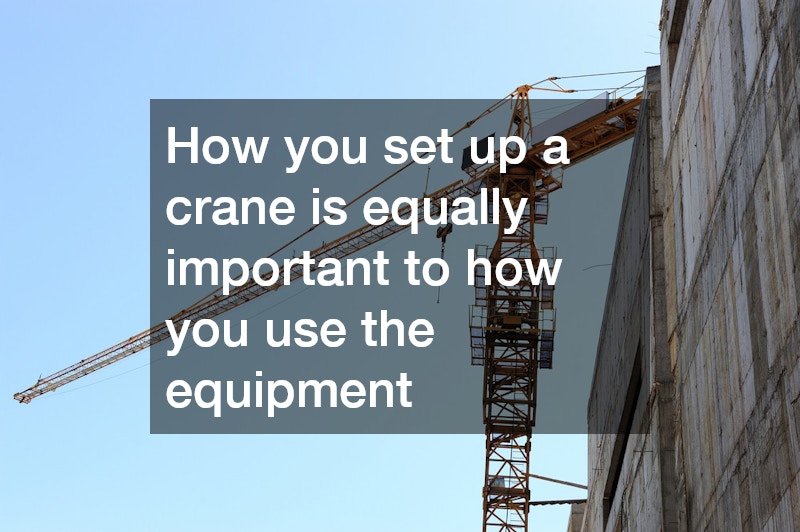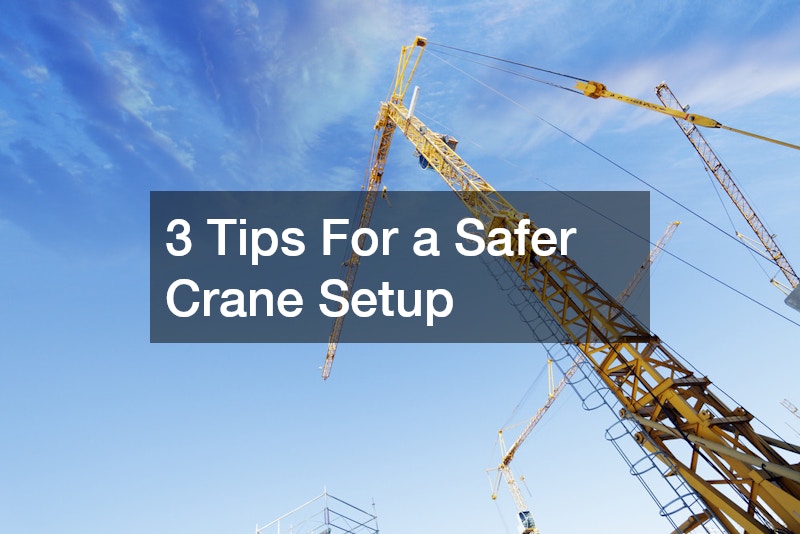
If you are a contractor or construction company owner who rents a crane from time to time, you should know that some ways to set up a crane are safer than others. How you set up a crane is equally important to how you use the equipment. As with any heavy machinery, one wrong move can have costly consequences for your wallet, safety, and the well-being of your contractors. With any crane rental for commercial construction and destruction projects, it’s better to be safe than sorry. Choosing a crane that is not only affordable but also rented out and maintained by a reputable company may cost more than opting for the lowest crane rental rates you can find, but in this instance, you’ll be paying for security and peace of mind, which is a worthy investment.

Choosing a company for renting all lift cranes is not a choice you should take lightly. As you’ll see below, our tips for safer crane operation are most effective when you pick a good crane rental service. Factoring some expenses related to safety into your crane hire cost and small crane rental cost will help you prioritize safety in your rental budget and ensure you are taken care of.

Cranes are serious pieces of machinery. That being said, it’s important to make sure your crane is as safe as possible, as any mistakes can prove to be not only costly, but hazardous and perilous. While it’s indeed tough to know if the ground beneath your crane will be able to support the weight and pressure underneath your crane’s outriggers, safe setup is dependent upon this knowledge. And in lieu of this need, U.S. standards and regulators are placing more and more emphasis on understanding the ground conditions, as well as utilizing crane mats and outrigger pads that can provide the support needed to safely get the job done.
That being said, here are 3 tips that will pave the path to a successful crane setup:
Be aware of your responsibilities
The OSHA states that cranes have to be assembled on firm ground that is drained and graded sufficiently and is in conjunction with accompanying supporting materials, like blocking, cribbing pads, mats, and is able to provide adequate support and levelness.<br.
Additionally, the ASME states that outrigger blocking or cribbing has to be sufficiently strong in order to prevent crushing, bending or general failure. It also needs to be thick enough that it can completely support the float, transmit loads and preventing shifting, toppling or excessive settlement under a load.
Know the ground bearing strength.
Before assembling, know the bearing strength of the ground and of the soils below. Since this is a pretty complex thing to determine, it’s best to enlist in the help of a geotechnical engineer in order to discern this. One way to do is it to use a Dynamic Core Penetrometer, a portable and simple to use device that can be compared to ground bearing pressure charts.
Once evaluating the ground, improve if necessary.
You can improve the ground by compacting it, removing the non-compacted surface layers, or bringing in dense inorganic compounds. Once you have secured the ground, be sure to use steel crane pads and crane mats for good measure.
Helpful research also found here. For more information, read this website.
